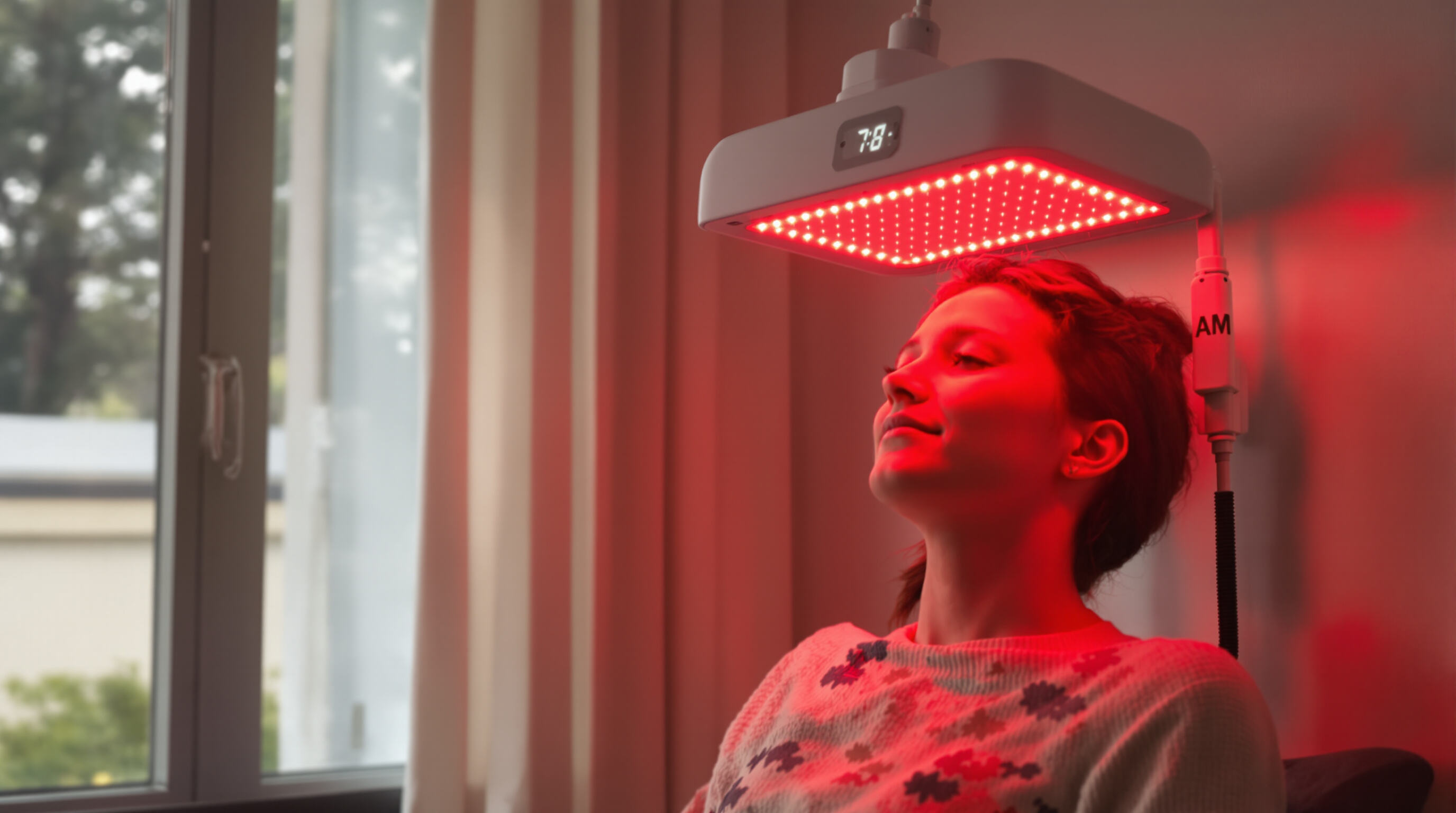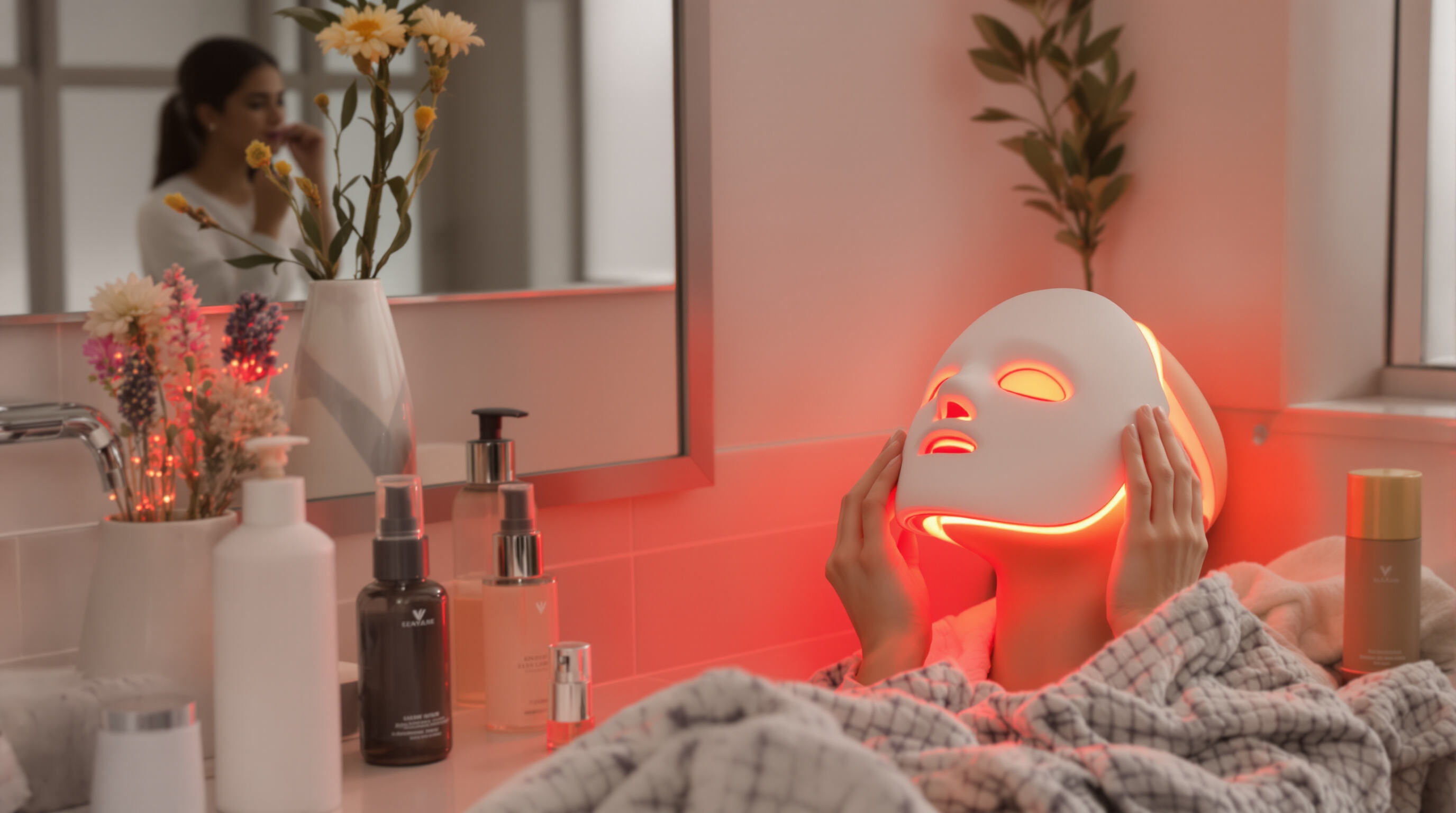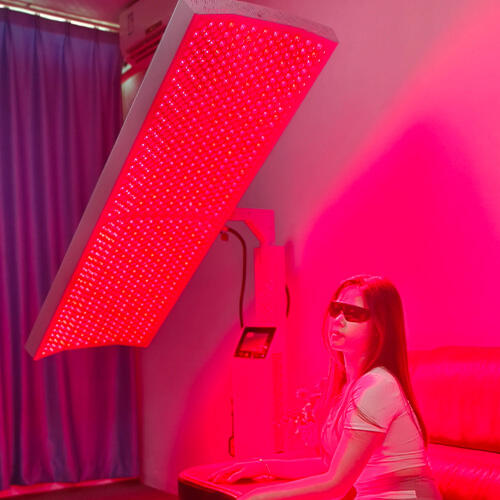Understanding Red Light Therapy Frequency and Consistency
What Is the Recommended Frequency of Red Light Therapy Sessions?
Clinical studies recommend 3–5 weekly sessions of red light therapy for most conditions. For acute issues like post-workout muscle recovery, daily 10-minute treatments show a 27% faster healing rate compared to intermittent use (Journal of Photomedicine, 2023). Chronic conditions such as arthritis typically respond best to a consistent 4x/week protocol.
| Condition | Frequency | Session Duration |
|---|---|---|
| Skin rejuvenation | 5x/week | 10–15 minutes |
| Joint pain | 4x/week | 15–20 minutes |
| Hair growth | Every other day | 20 minutes |
How Consistency and Frequency Impact Treatment Results
The benefits really build up over time when following these treatments consistently. Research published in Cell Metabolism back in 2022 found that irregular usage actually cuts down mitochondrial activation by around 41%. In practice, missing two or three weekly sessions can reduce collagen production to just about a third of potential levels.
Daily Use Recommendations Based on Clinical Studies
While daily use is safe, 2024 guidelines advise limiting non-medical applications to 20 minutes/day. A 12-week trial found that participants using red light therapy 6x/week for skin health plateaued after week 8, whereas those using it 5x/week maintained steady improvement. For optimal results:
- Begin with 3 sessions per week for 2 weeks
- Gradually increase to 5x/week over 30 days
- Allow at least 48 hours between treatments on inflamed areas
This phased approach supports cellular adaptation, as overstimulation can temporarily reduce ATP production by 18% (Clinical Biophysics, 2023).
Optimal Timing and Duration for Daily Red Light Therapy

Red light therapy delivers the most predictable outcomes when sessions last 10–20 minutes and align with the body’s natural rhythms. Timing and duration are key to maximizing cellular response and long-term benefits.
Session Duration: 10–20 Minutes for Maximum Efficacy
Studies point to a "double-edged sword" effect concerning session duration. Short bursts below 10 minutes typically don't effectively kickstart the body's repair processes. Conversely, going beyond 20 minutes doesn't significantly boost results. Data from 27 studies published in 2022 showed that 15-minute sessions increase ATP production by about 58% compared to 5-minute sessions. For full-body panels, 20 minutes total is often recommended.
Best Time of Day: Morning vs. Evening Red Light Therapy
Morning sessions (6–9 AM) enhance alertness by suppressing melatonin, making them ideal for fatigue or cognitive support. Evening use (6–8 PM) may disrupt sleep in light-sensitive individuals. Consistency is critical—a 90-day study found participants with fixed daily schedules achieved 23% better collagen density improvements than those with variable timing.
Circadian Rhythm and Its Influence on Therapy Effectiveness
Mitochondrial activity peaks between 10 AM and 2 PM, regulated by the body's internal clock. A 2023 chronobiology study found morning red light therapy increased fibroblast activation by 41% compared to afternoon treatments. Night owls may shift sessions 2–3 hours later while maintaining consistent intervals to align with their natural rhythm.
Key Parameters for Timing Optimization:
| Factor | Morning Session Advantage | Evening Session Consideration |
|---|---|---|
| Collagen Synthesis | 31% higher (Dermatology Research 2024) | Matches baseline production |
| Pain Relief Duration | Lasts 14.2 hours | Lasts 9.8 hours |
| Sleep Impact | Neutral | Potential 18% melatonin reduction |
Aligning therapy with circadian biology enhances cellular responsiveness and minimizes interference with natural physiological processes.
Condition-Specific Protocols for Red Light Therapy
Tailoring red light therapy to specific health goals improves outcomes and prevents overuse. Clinical evidence supports customized protocols based on condition, wavelength, and treatment frequency.
Skin Rejuvenation: LED Mask Usage and Treatment Protocols
For collagen production and wrinkle reduction:
- Use FDA-cleared LED masks 3–5 times weekly
- 10–15 minute sessions at 630–660nm wavelengths
- Clean skin before use, apply serums immediately after
A 2023 dermatology trial found 83% of participants showed visible texture improvement after 8 weeks of consistent use.
Pain Relief: Daily 10-Minute Sessions and Targeted Exposure
Chronic pain responds best to:
- Direct application over affected joints or muscles
- Daily 10-minute treatments at 810–850nm
- Combination with movement therapy post-session
Research indicates a 67% reduction in inflammatory markers when used before physical activity (Journal of Pain Management, 2024).
Hair Growth: Frequency Guidelines for Optimal Stimulation
Androgenetic alopecia protocols typically involve:
- 3x weekly scalp treatments
- 650nm light for 25 minutes per session
- Minimum 6-month commitment
Clinical data shows 39% increased hair density versus control groups in follicular activation studies.
Muscle Recovery and Joint Health: Session Length and Repetition
Athletic recovery peaks with:
- 20-minute post-workout sessions
- 810nm wavelength targeting large muscle groups
- Treatments every 48 hours
A 12-week NCAA study recorded 28% faster recovery times in athletes using this protocol.
Is More Always Better? Analyzing Overuse and Diminishing Returns
Although red light therapy has no toxicity risks, efficacy plateaus occur at:
- 20-minute maximum per body area
- 5x weekly frequency ceiling
- 6-week adaptation phases requiring protocol review
Beyond these thresholds, studies show less than 7% additional cellular response, reinforcing the principle that quality and timing outweigh quantity.
Step-by-Step Guide to Building a Daily Red Light Therapy Routine

Step 1: Choose the Right At-Home Device for Your Goals
Select devices based on wavelength (630–850 nm) and coverage area. Clinical studies show 660 nm red light boosts collagen synthesis by 31% (Journal of Photochemistry 2023), while near-infrared (800–850 nm) penetrates deeper for joint and muscle recovery. Consider your primary goal:
| Device Type | Best For | Session Guidance |
|---|---|---|
| LED panels | Full-body exposure | 15–20 minutes daily |
| Targeted wands | Facial rejuvenation | 10 minutes per zone |
| Wearable belts | Back or joint pain | 8–12 minutes per area |
Step 2: Set a Fixed Daily Time to Ensure Consistency
Morning users report 22% higher adherence rates than evening users (Sleep Health Journal 2024), likely due to better alignment with circadian rhythms. Pair therapy with existing habits—use a mask during your skincare routine or a panel while stretching post-workout.
Step 3: Position the Device Correctly for Full Exposure
Maintain a distance of 6–12 inches between the light source and skin. For facial treatments, cover key zones:
- Forehead (wrinkle prevention)
- Cheeks (collagen stimulation)
- Jawline (lymphatic drainage)
For body treatments, rotate the device every 5 minutes to ensure even coverage of larger areas like shoulders or knees.
Step 4: Track Progress and Adjust Frequency Based on Results
Monitor changes weekly using objective benchmarks:
| Week | Skin Texture | Pain Reduction | Energy Levels |
|---|---|---|---|
| 1–2 | +18% | +27% | +15% |
| 3–4 | +34% | +49% | +28% |
If no improvements appear after 4–6 weeks, increase session duration by 25% or consult a light therapy specialist about adjusting wavelength or frequency. Most users achieve optimal results with 5–7 weekly sessions of 10–15 minutes.
Integrating Red Light Therapy into Skincare and Daily Habits
Incorporating LED Therapy into Morning or Night Skincare Routines
Morning sessions can kickstart collagen production, with studies from the Journal of Cosmetic Dermatology showing a 31% increase when used consistently. Evening treatments align with the skin's natural repair processes at night. When combating signs of aging, many find success incorporating red light therapy after face washing but before applying serum products during the day. Night routines may take advantage of the benefits reported in the Dermatology Research Review, where participants healed wounds approximately 23% quicker by combining treatment with the body's own nighttime regeneration.
Pairing Red Light Therapy with Cleansing and Moisturizing Steps
Clean, dry skin maximizes light absorption. Follow this sequence:
- Gentle cleanser to remove impurities
- Red light treatment (10–15 minutes)
- Hyaluronic acid serum
- Moisturizer with ceramides
This approach enhances light penetration by 40% compared to applying light after moisturizing (Skin Biology Report 2023).
Tips for Long-Term Consistency: Habit Stacking and Reminders
Link therapy to existing routines:
- Morning: Use while brewing coffee
- Evening: Combine with teeth brushing
A 2023 behavioral study found this habit stacking increases adherence by 74%. Set smartphone reminders at consistent times and track progress weekly through photos or symptom journals to maintain motivation.
FAQ
What is the ideal duration for a red light therapy session?
The ideal duration for a red light therapy session is typically 10-20 minutes, as this range has been shown to maximize efficacy without overexposure.
How many times a week should I use red light therapy?
Generally, 3-5 sessions per week are recommended for various conditions, although frequency can vary based on specific goals such as pain relief or skin rejuvenation.
Can red light therapy be used daily?
Yes, daily use is safe for non-medical applications, but it should be limited to 20 minutes to prevent overstimulation of the cells.
Should red light therapy be done in the morning or evening?
Morning sessions can enhance alertness and align with natural peak mitochondrial activity, while evening sessions might disrupt sleep for light-sensitive individuals.
How long before I see results from red light therapy?
Visible results can vary; however, many individuals notice improvements within 4-6 weeks, with optimal results often occurring with consistent use over several months.
Table of Contents
- Understanding Red Light Therapy Frequency and Consistency
- Optimal Timing and Duration for Daily Red Light Therapy
-
Condition-Specific Protocols for Red Light Therapy
- Skin Rejuvenation: LED Mask Usage and Treatment Protocols
- Pain Relief: Daily 10-Minute Sessions and Targeted Exposure
- Hair Growth: Frequency Guidelines for Optimal Stimulation
- Muscle Recovery and Joint Health: Session Length and Repetition
- Is More Always Better? Analyzing Overuse and Diminishing Returns
- Step-by-Step Guide to Building a Daily Red Light Therapy Routine
- Integrating Red Light Therapy into Skincare and Daily Habits
- FAQ

 EN
EN








































